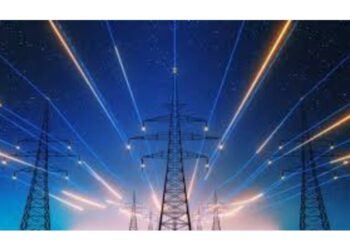Land is a precious commodity, and the world is getting denser day by day. In the past decade, we have been installing massive solar farms on unused, barren lands. But coming across such lands is now becoming a few-and-far-between event.
Conventional wisdom has always dictated us to put solar panels on rooftops or build solar farms. But our adroit nature has led us to put panels on the roof of the parking lots.
Every space in and around us could be seen as a lost opportunity for solar incidence and electricity generation. These untapped spaces, if used to their full potential, can add unimaginable impetus to the overall renewable energy generation of a country.
Solar energy is the most viable and abundant energy source. Earth receives around 340 watts of energy per square metre. Even tapping a per cent of incident energy would be sufficient to power all our needs.
The main objective of building this is to use green energy to power as many of our operations. Solarifying establishments would help us to jump-start the global energy transition to 100% renewables.
These structures are also called solar canopies or solar carports. They can be installed in place of traditional car shed structures. The tilt of the canopy should be built depending upon the direction of the sun, to absorb maximum sunlight. One could list several of the benefits of such a setup.
Solar is an ideal resource for powering EV chargers with clean energy while providing a business advantage. Carports not only provide shading to cars but also protection from snow and rain. Such a structure also increases the value of real estate. It also enables premises to build structures adhering to net zero energy codes.
Through the mechanism of net metering, excess energy can be transported to the grid, making it an additional source of income for the establishments. Upfront costs can be avoided entirely by involving third parties and creating a purchase power agreement (PPA).
Companies are also eligible for tax credits and incentives. Parking operators can also charge people to plug in their EVs. It is always advantageous if energy is produced near the actual point of use, as compared to having a massive solar plant outside the city and then transferring the energy produced. Maintenance-wise as well it is much easier.
The proposition of solar canopies populating our parking lots, albeit sounding a noble one, could have potential hiccups too. They are at least 50% more expensive than regular solar farms.
Placing solar panels above structures would mean the structures need to be substantially stronger, and more materials and labour are required, which escalates the engineering costs. While building such carports from scratch is relatively easier, the difficult thing is to retrofit panels on existing structures.
Conventional utility giants have been participating in anti-solar lobbying and have been hindering PV policy changes to further government assistance on affordable solar installation.
So has anyone actualized this concept in practice? In India, these kinds of structures are not commonplace as of yet. Ideally, few environmental laws should be passed to dictate every residential and commercial establishment that is built from here on, to adhere to green energy codes.
Walmart in the USA has built solar canopies in 7 of their California stores, totalling a capacity of 6.5 MW. For shoppers, this means their transportation costs would be zero, as their vehicles can be charged using the EV charging system attached to the carport.
France has been collectively taking strides in meeting their renewable energy goals. The country’s new law requires large parking lots (ones having a capacity of more than 80 spaces) to mandatorily have at least 50% of their lot covered in solar canopies. Commercial solar canopies are here to say, and with time we will only see more of it. Just by switching to 100% renewable energy, we are not only saving ourselves from all the repercussions of ramifications but also trillions of dollars we would pour in to fix it.
About The Author:
Sharad Gupta
The Author is the Vice President – Solar Design and Engineering (VP – Solar Design and Engineering) of Oorjan Cleantech (https://www.oorjan.com). Oorjan is one of India’s fastest-growing solar companies, co-founded by IITians and ex-bankers.












